Jaguar E-Pace vs Mercedes EQV – Performance, range & efficiency compared
Everyday use, family trips or long-distance drives – here’s where the differences show.
Discover whether Jaguar E-Pace or Mercedes EQV fits your lifestyle better.
Costs and Efficiency:
Looking at overall running costs, both models reveal some interesting differences in everyday economy.
Jaguar E-Pace has a convincingly advantage in terms of price – it starts at 32400 £, while the Mercedes EQV costs 50700 £. That’s a price difference of around 18347 £.
As for range, the Mercedes EQV performs decisively better – achieving up to 364 km, about 295 km more than the Jaguar E-Pace.
Engine and Performance:
Power, torque and acceleration are the classic benchmarks for car enthusiasts – and here, some clear differences start to show.
When it comes to engine power, the Jaguar E-Pace has a noticeable edge – offering 269 HP compared to 204 HP. That’s roughly 65 HP more horsepower.
In acceleration from 0 to 100 km/h, the Jaguar E-Pace is clearly quicker – completing the sprint in 7.30 s, while the Mercedes EQV takes 10.30 s. That’s about 3 s faster.
In terms of top speed, the Jaguar E-Pace performs evident better – reaching 211 km/h, while the Mercedes EQV tops out at 140 km/h. The difference is around 71 km/h.
There’s also a difference in torque: Jaguar E-Pace pulls noticeable stronger with 540 Nm compared to 365 Nm. That’s about 175 Nm difference.
Space and Everyday Use:
Cabin size, boot volume and payload all play a role in everyday practicality. Here, comfort and flexibility make the difference.
Seats: Mercedes EQV offers to a small extent more seating capacity – 6 vs 5.
In curb weight, Jaguar E-Pace is convincingly lighter – 1783 kg compared to 2666 kg. The difference is around 883 kg.
In terms of boot space, the Mercedes EQV offers decisively more room – 1410 L compared to 494 L. That’s a difference of about 916 L.
In maximum load capacity, the Mercedes EQV performs clearly better – up to 5010 L, which is about 3840 L more than the Jaguar E-Pace.
When it comes to payload, Mercedes EQV clearly perceptible takes the win – 834 kg compared to 554 kg. That’s a difference of about 280 kg.
Who wins the race?
The Mercedes EQV proves to be leaves the rival little chance and therefore becomes our DriveDuel Champion!
Mercedes EQV is the better all-rounder in this comparison.
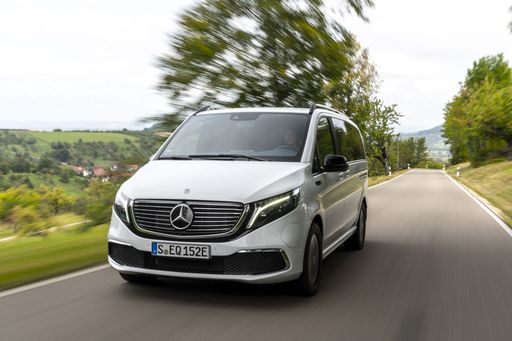
Mercedes EQV
Jaguar E-Pace
The Jaguar E-Pace is a compact SUV that combines the brand's signature luxury with a dynamic driving experience. Its sleek design features graceful lines and an assertive stance, making it a standout on any road. Inside, the E-Pace boasts a meticulously crafted interior with high-quality materials and advanced technology, providing both comfort and connectivity for drivers and passengers alike.
details @ media.jaguar.com
@ media.jaguar.com
 @ media.jaguar.com
@ media.jaguar.com
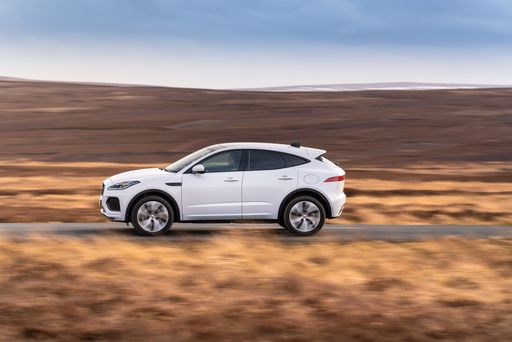 @ media.jaguar.com
@ media.jaguar.com
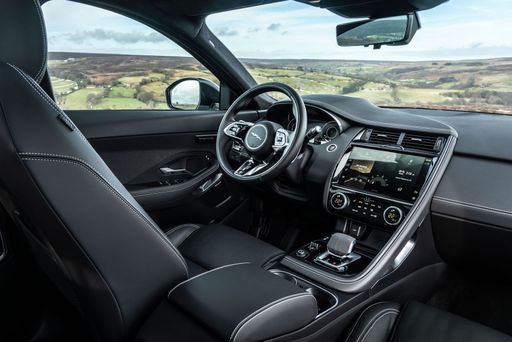 @ media.jaguar.com
@ media.jaguar.com
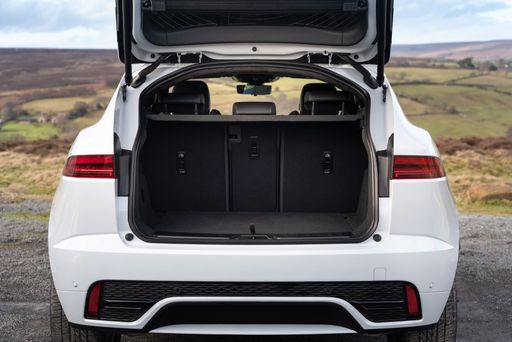 @ media.jaguar.com
@ media.jaguar.com
Mercedes EQV
The Mercedes-Benz EQV stands out as a versatile electric vehicle combining luxury with practicality, making it an ideal choice for environmentally conscious families. With its spacious interior and sleek design, it offers a premium driving experience that aligns with the brand's reputation for quality and innovation. As a sustainable option in the realm of people carriers, it exhibits the perfect balance between cutting-edge technology and everyday usability.
details @ group-media.mercedes-benz.com
@ group-media.mercedes-benz.com
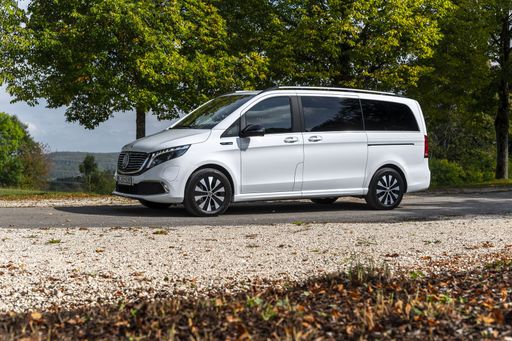 @ group-media.mercedes-benz.com
@ group-media.mercedes-benz.com
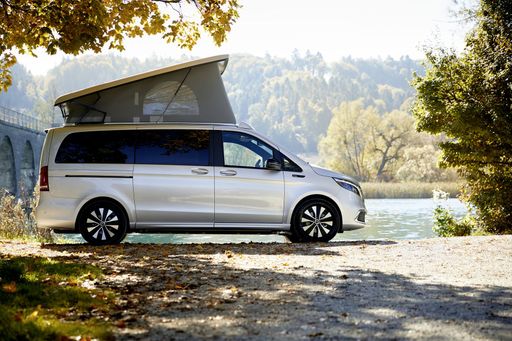 @ group-media.mercedes-benz.com
@ group-media.mercedes-benz.com
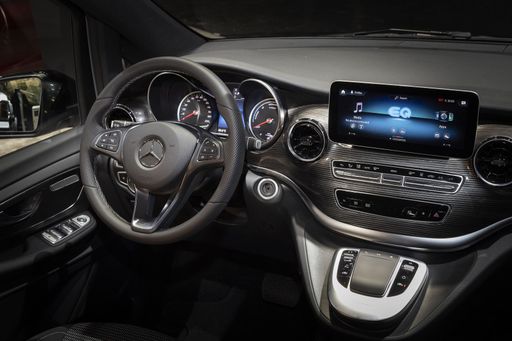 @ group-media.mercedes-benz.com
@ group-media.mercedes-benz.com
 @ group-media.mercedes-benz.com
@ group-media.mercedes-benz.com

|

|
|
|
|
Costs and Consumption |
|
|---|---|
|
Price
32400 - 56100 £
|
Price
50700 - 54400 £
|
|
Consumption L/100km
1.4 - 8.2 L
|
Consumption L/100km
-
|
|
Consumption kWh/100km
-
|
Consumption kWh/100km
27.1 - 27.5 kWh
|
|
Electric Range
69 km
|
Electric Range
244 - 364 km
|
|
Battery Capacity
11.50 kWh
|
Battery Capacity
60 - 90 kWh
|
|
co2
33 - 185 g/km
|
co2
0 g/km
|
|
Fuel tank capacity
56 - 67 L
|
Fuel tank capacity
-
|
Dimensions and Body |
|
|---|---|
|
Body Type
SUV
|
Body Type
Bus
|
|
Seats
5
|
Seats
6
|
|
Doors
5
|
Doors
5
|
|
Curb weight
1783 - 2173 kg
|
Curb weight
2666 - 2863 kg
|
|
Trunk capacity
494 L
|
Trunk capacity
1030 - 1410 L
|
|
Length
4395 mm
|
Length
5140 - 5370 mm
|
|
Width
1984 mm
|
Width
1928 mm
|
|
Height
1648 mm
|
Height
1920 - 1923 mm
|
|
Max trunk capacity
1170 L
|
Max trunk capacity
4630 - 5010 L
|
|
Payload
497 - 554 kg
|
Payload
637 - 834 kg
|
Engine and Performance |
|
|---|---|
|
Engine Type
Plugin Hybrid, Diesel MHEV, Petrol MHEV
|
Engine Type
Electric
|
|
Transmission
Automatic
|
Transmission
Automatic
|
|
Transmission Detail
Automatic Gearbox
|
Transmission Detail
Reduction Gearbox
|
|
Drive Type
All-Wheel Drive, Front-Wheel Drive
|
Drive Type
Front-Wheel Drive
|
|
Power HP
160 - 269 HP
|
Power HP
204 HP
|
|
Acceleration 0-100km/h
7.3 - 10.5 s
|
Acceleration 0-100km/h
10.3 - 12.1 s
|
|
Max Speed
190 - 211 km/h
|
Max Speed
140 km/h
|
|
Torque
260 - 540 Nm
|
Torque
365 Nm
|
|
Number of Cylinders
3 - 4
|
Number of Cylinders
-
|
|
Power kW
118 - 198 kW
|
Power kW
150 kW
|
|
Engine capacity
1498 - 1998 cm3
|
Engine capacity
-
|
General |
|
|---|---|
|
Model Year
2024
|
Model Year
2024
|
|
CO2 Efficiency Class
B, G
|
CO2 Efficiency Class
A
|
|
Brand
Jaguar
|
Brand
Mercedes-Benz
|
What drive types are available for the Jaguar E-Pace?
The Jaguar E-Pace is offered with All-Wheel Drive or Front-Wheel Drive.
The prices and data displayed are estimates based on German list prices and may vary by country. This information is not legally binding.
